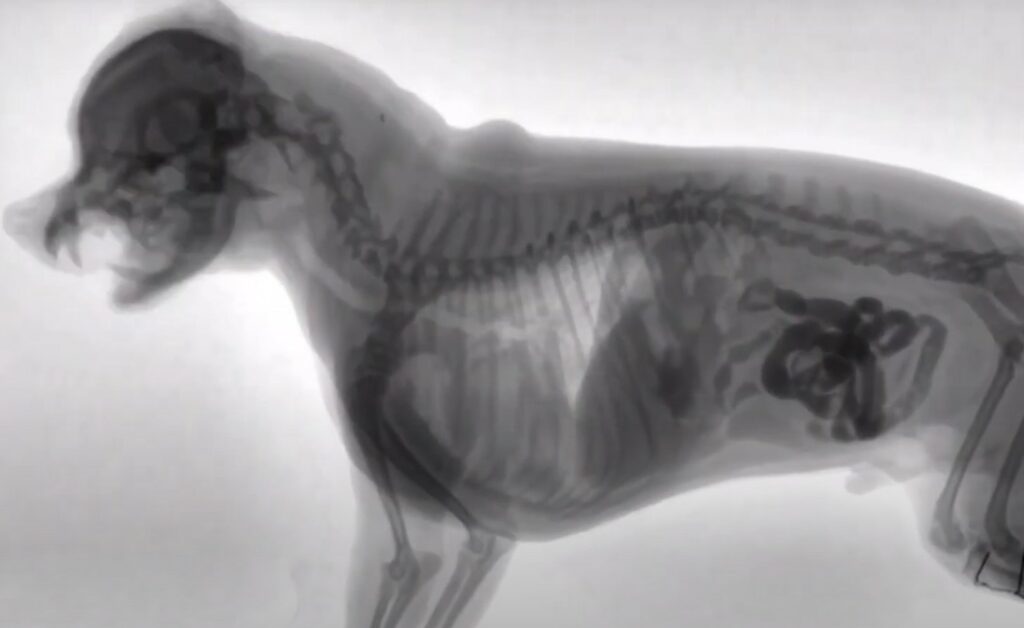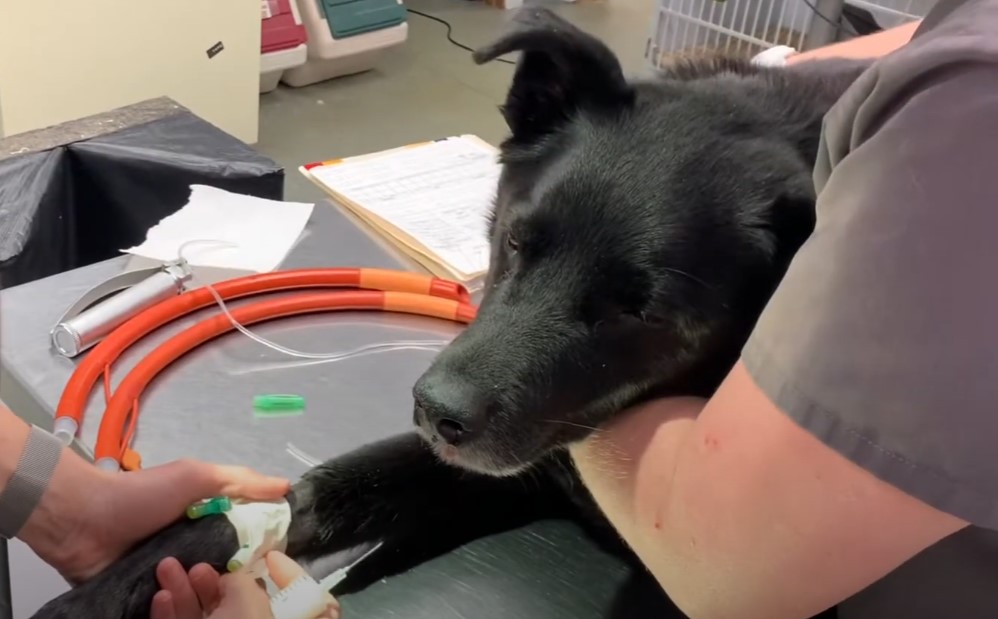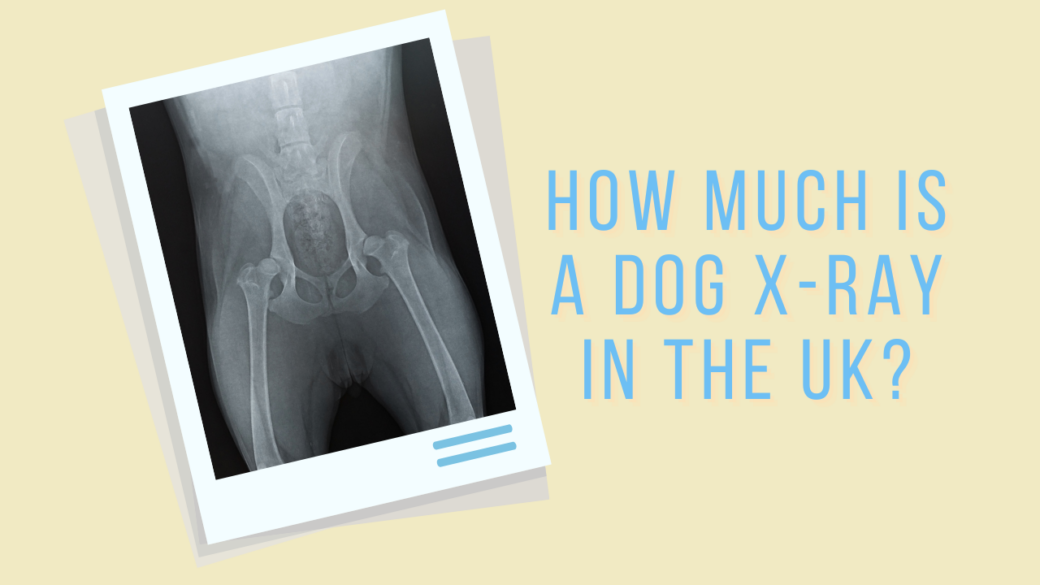Unfortunately, there are times when dogs will require an X-ray. This might happen if the vet wants to examine a dog’s bones, internal organs, and tissue to give the owner a proper diagnosis. Like many veterinary treatments, an X-ray can be a little costly, which is why many dog owners find themselves asking, “How much is a dog x-ray in the UK?”
The cost of a dog X-ray can vary from £200 to £500, depending on different factors. Where the vet practice is, the size of the dog, and other aspects will affect the price you pay for this procedue, as discussed in this article.
There are a number of aspects that can affect the cost of a dog X-ray, so knowing how your pet’s circumstances will impact the price is vital. This, as well as advice from professional veterinary surgeons, can help pet owners make an informed decision on how to proceed with their dogs’ treatments.
If you are wondering about the cost of a dog X-ray, then this article will provide the answer as well as explain what a dog X-ray is, why a dog might require an X-ray, and the various factors affecting the cost of the X-ray.
Table of Contents
The Cost of a Dog X-Ray in the UK
A dog X-ray can cost range between £200 to £500 in the UK. Several factors affect the cost of a dog X-ray, including the location of the veterinary practice and the type of X-ray required. According to the Animal Trust website, the cost of an X-ray for a dog is £395.
What is a Dog X-Ray?
An X-ray, which produces an image known as a radiograph, is a diagnostic imaging technique that uses low levels of radiation to capture an image of the dog or cat’s body cavities, skeleton, and soft tissue. It is one of the fastest and most common forms of imaging used by vets to diagnose any diseases or issues in the animal’s bones and organs.
Although X-rays are primarily carried out by veterinary nursing staff, the radiographs are analysed by the veterinarian. They will use these images to check for any abnormalities in the dog or puppy’s body, such as broken or fractured bones, foreign objects, tumours, and more. These issues can be picked up on as the radiation is absorbed by the individual body parts in different amounts; for example, bones will appear white as they absorb more radiation than organs and tissue.
However, not all issues will present themselves on an X-ray image; some tumours will blend in with the body tissue, and some plastics will appear invisible. If this is the case, a 3D scan, such as an MRI, might be suggested to obtain a better image of the sick dog.
Although other tests might be required to complete the diagnosis, an X-ray is usually a good procedure to carry out.

Types of Dog X-Rays
Different body parts and regions require adjusted viewpoints, and different X-rays can be used to ensure a detailed image. Each area of a dog’s body will be X-rayed at specific angles to achieve clear imaging so the vet can offer the correct advice and diagnosis.
There are several types of X-rays that dogs can have, including:
- Abdominal X-rays
- Chest X-rays
- Dental X-rays
- Joint X-rays – This includes joints like elbows, hips, spine, and wrists.
- Limb X-rays
Sometimes, an X-ray will not give the best image, which can cause the vet to decide whether a CT, MRI scan, or ultrasound is the better choice.
Why Would a Dog Need an X-Ray?
X-rays are used on animals for several reasons. The most obvious reasons a vet would use an X-ray include:
- Dental disease
- Cancer
- Lethargy
- Limping
- Seizures
- Trauma, such as being hit by a car
Other reasons an X-ray might be required are less well-known, and these are:
- Abnormal blood work
- Coughing
- Metabolic disease, like diabetes
- Unexplained weight change
- Upset stomach
Factors Affecting the Cost of a Dog X-Ray
X-rays can be an expensive medical procedure for dog owners, and for good reason. The process requires a lot more than simply getting radiographs of the dog’s skeleton and other body parts; it may also need anaesthesia or sedation to ensure the animal copes with the process without any stress.
Although the location of the vet practice and the type of X-ray required can increase or decrease the cost, several other factors can affect the price of an X-ray for a dog, as shown in this section.
The Breed and Size of the Dog
Larger dogs will cost more to be X-rayed than smaller dog breeds. Big dog breeds will require more anaesthetic or sedative to stay under during the X-raying process, which can increase the cost of the veterinary process.
Bigger dogs will also have larger, thicker bones, which might require multiple tries to get a clear image of.
Whether the Dog Requires Anaesthesia or Sedation
Not all dogs will require anaesthesia or sedation before surgery or going for an X-ray. Some dogs might be calm enough to lie still during the process. A veterinary practice will take into account the cost of a general anaesthetic or sedative when charging pet owners.
If there are additional checks to carry out on a dog or cat, anaesthesia or sedation might be used to ensure they stay comfortable during the process.

How Many Views Are Required to Produce a Clear Image
Unfortunately, it can take a few tries before a usable image is produced. X-rays are not fool-proof, and the radiographs might not be as clear as vets require, so several images might be taken to produce a clear enough radiograph to show the injury or issue.
In some cases, multiple images are required; this could be because the dog is injured in different areas of the body or a few angles of the issue are needed. Your vet will be able to discuss this with you.
How Much is a Dog X-Ray in the UK? FAQs
Although knowing the cost of a dog X-ray is essential information, pet owners will likely have other questions before choosing this imaging technique. Some of the most common questions are listed below:
Can you compare vet costs?
Yes, you can compare vet costs if your pet requires medical treatment. Although the cost of treatment is not always the determining factor, it is an important one to know. Veterinary practices often have websites, some of which list their services and prices, and these can be viewed to determine the most cost-effective vet for treatment.
Pet owners can also ask what vets charge during the initial consultation before going ahead with their dogs’ treatments; this quote should cover the cost of treatment in full, as well as any subsequent costs for ongoing care.
What happens if I have pet insurance?
Pet insurance can be a good investment for dog owners, especially if they want to have coverage for unexpected pet costs. Insurance will cover many health issues and treatments dogs might face throughout their lives; X-rays should be included in this. However, each insurance provider will differ on what is and is not covered.
If you do have pet insurance, you should discuss this with your veterinary practice. The vet might require payment then and there, and then the insurance company can reimburse you for the treatment cost once you make the claim.
What happens if I can’t afford the vet bill?
Vet bills can be expensive, and some people will struggle to pay for their pets’ treatment. At times, pet charities, like Blue Cross and PDSA, can help dog owners who cannot afford their vet bills; this can happen through helping with payments or offering reduced costs at charity clinics. To receive help from charities, you will have to meet specific criteria.
Before contacting a charity, you can ask the practice for options when paying veterinary fees. Some vets will offer payment plans and alternative treatments or even suggest a cheaper veterinary practice if the dog owner cannot cover the costs.
Even if you cannot afford veterinary treatment, never delay seeking help for your pets. This can worsen the condition.
To Sum Up
If your dog ever requires an X-ray, there is a lot of information you will be looking for. As a pet owner, not only do you want to know your dog will be safe during the X-ray process, you want to know that you can afford the treatment. X-rays can be expensive, ranging from £200 to £500, depending on the type, location, and other factors.
So, if the vet says your dog needs an X-ray, this article should have helped to inform you about the costs in the UK and the necessary information this process can entail.
Disclaimer: This article is for informational purposes only and should not be used as a substitute for professional veterinary advice.

